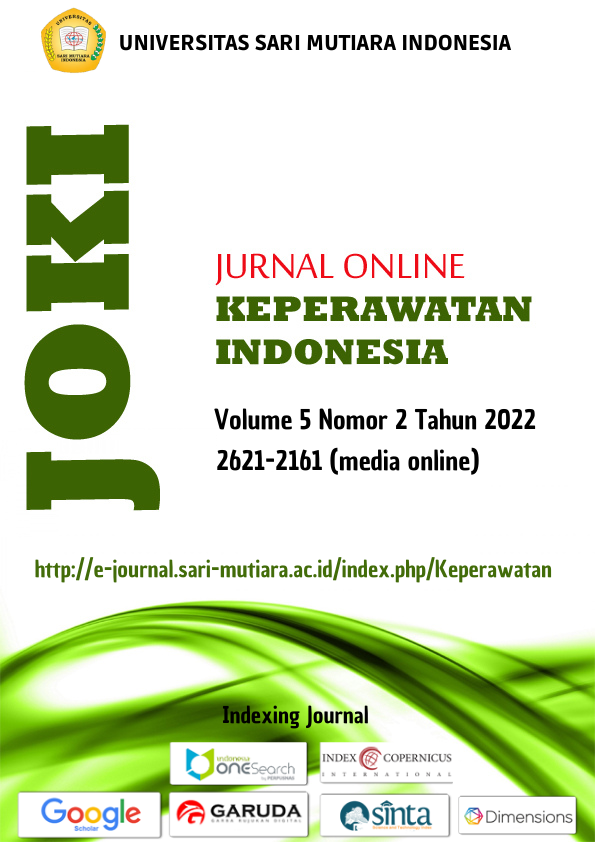PENGARUH PEMBERIAN GLUCOMANNAN HYDROLYSATES (GMH) DAN LACTIC ACID (LA) TERHADAP PENINGKATAN JUMLAH KOLONI BAKTERI LACTOBACILLUS spp PADA BACTERIAL VAGINOSIS WANITA USIA SUBUR
Main Article Content
Abstract
Bacterial Vaginosis (BV) is an infection caused by an imbalance in the normal vaginal flora where lactobacillus spp., producing hydrogen peroxidase (H2O2) is replaced by anaerobic bacteria such as Gardnerella vaginalis, Mobiluncus spp., Prevotella spp., Bacterides, and Mycoplasma sp., which are generally occurs in women of childbearing age (WUS). Substitution of Lactobacillus spp., this causes a decrease in H2O2 which is generally characterized by the production of a lot of vaginal secretions, gray to yellow, thin, homogeneous, has a fishy odor, and there is an increase in pH. Glucomannan Hydrolysates (GMH) as a prebiotic is expected to provide nutrition to Lactobacillus spp so that it can multiply and increase in number, while BV gel containing Lactic Acid (LA) can reduce vaginal pH to become acidic so that pathogenic bacteria are not suitable for growing in an acidic environment. The type of research used is true experiment pretest - posttest. Respondents in the study totaled 28 people and were grouped into 4, namely 1) Given metronidazole antibiotics. 2) Given Antibiotics + GMH. 3) Given LA. 4) Given LA+GMH. The number of bacterial colonies through the streak plate method. Giving LA+GMH to BV women of childbearing age has a significant effect on increasing the number of Lactobacillus spp bacterial colonies. Therefore giving LA+GMH is useful in treating BV.
Downloads
Article Details

This work is licensed under a Creative Commons Attribution-ShareAlike 4.0 International License.
References
Abbas, A.K,et al. 2015. Cellular and molecular immunology-7thed. text book
Adam, et all. 2011. Bakterial vaginosis
Alice, et al. 2012. Screening for bacterial vaginosis at the time of intrauterine contraceptive device insertion: Is There a Role? http://www.jogc.com/abstracts/full/201202_Gynaecology_1.pdf. Diakses tanggal 2 Februari 2017
Antarini, A. 2011. Sinbiotik antara prebiotik dan probiotik. J Ilmu Gizi 2(2): 148-155.
CDC, 2016. Bacterial Vaginosis–CDC Fact Sheet. Division of STD Prevention (DSTDP) Centers for Disease Control and Prevention www.cdc.gov/std
Departemen Kesehatan Repubik Indonesia. Undang-Undang Nomor 23 Tahun 1992 Tentang Kesehatan.Http: //Id.Wikipedia.Org/Wiki/Promosi Kesehatan, Diakses Tanggal 25 September 2008
Eriksson, Katarina. 2011. Bacterial Vaginosis: Diagnosis, Prevalence, and Treatment. Sweden: Obstetrics and Gynecology and Clinical Microbiology Department of Clinical and Experimental Medicine Linköping University Sweden
Fethers K, Twin J, Fairley Ck, Fowkes Fj, Garland Sm, Fehler G, Et Al. Bacterial Vaginosis (Bv) Candidate Bacteria: Associations With Bv And Behavioural Practices In Sexually- Experienced And Inexperienced Women. Plos One 2012;7(2):E30633
Gajer P, Brotman RM, Bai G, et al. Temporal dynamics of the human vaginal microbiota. Sci Transl Med. 2012;4(132):32ra52. [PMC free article] [PubMed]
Gelber SE, Aguilar JL, Lewis KL, Ratner AJ. 2008. Functional and phylogenetic characterization of Vaginolysin, the human-specific cytolysin from Gardnerella vaginalis. J Bacteriol. 2008 Jun;190(11):3896-903. doi: 10.1128/JB.01965-07. Epub 2008 Apr 4
Guaschino S, De Santo D, De Seta F: New perspectives in antibiotic prophylaxis for obstetric and gynaecological surgery. J Hosp Infect 2002, 50(Suppl A):S13–S16.
Hillier Sl. The complexity of microbial diversity in bacterial vaginosis. New England Journal Medicine 2005;353:18.
Kirmani, N., 1988. Normal bacterial flora of vagina. Jpma. The journal of the pakistan medical association, 38(1), Pp.1-3.
Mestecky J et al. 2005. Mucosal Immunology 3rd edn. Academic press: San Diego
Murtiastutik D. Vaginosis Bakterial. Dalam: Barakbah J, Lumintang H. Martodihardjo S. editor. Infeksi Menular Seksual. Surabaya: AUP: 2008. H 72-83.
Ness RB, Soper DE, Holley RL, et al.: Douching and endometritis: results from the PID evaluation and clinical health (PEACH) study. Sex Transm Dis 2001, 28:240–245.
Ningrat Fs. 2011. Uji sensitivitas dan spesitifitas autobio bv assay dan kriteria amsel dibandingkan dengan skor nugent pada vaginosis bakterial bag/smf ilmu kesehatan kulit dan kelamin. Semarang: Universitas Diponegoro,; V. Ppds1
Nursalam. 2013. Metodologi penelitian ilmu keperawatan pendekatan praktis. Edisi 3. Jakarta: Salemba Medi
Ociviyanti D, Rosana Y. Wibowo N. Profil flora vagina dan tingkat keasamaan vagina perempuan Indonesia. Majalah Obstet Ginekol Indonesia 2009; 33:124-31
Pratiwi En. 2012. Prevalensi dan karakteristik wanita hamil penderita bacterial vaginosis di Poliklinik Obstetri Dan Ginekologi Rsud Arifin Achmad Pekanbaru
Putra, B.R.M., Dewantiningrum, J. And Ciptaningtyas, V.R., 2014. Uji diagnostik kriteria amsel dibandingkan dengan kriteria nugent dalam skrining infeksi bakterial vaginosis pada kehamilan (Doctoral Dissertation, Faculty Of Medicine Diponegoro University).
Siegemund, S., et al. 2009. “Differential IL-23 requirement for IL-22 and IL-17A production during innate immunity against Salmonella enterica serovar Enteritidis." International immunology 21(5): 555-565
Shuklov, et al. 2016. “Chemo – Catalyzed Pathways to Lactic Acid and Lactates”. Advanced Synthesis and Catalysis. 358 (24): 3910-3931. doi:10.1002/adsc.201600768
Suharsimi, Arikunto. 2006. Prosedur penelitian suatu pendekatan praktek. Jakarta, Rineke Cipta
Sweet RL: Gynecologic conditions and bacterial vaginosis: implications for the non-pregnant patient. Infect Dis Obstet Gynecol 2000, 8:184–190.
Tamonud Modak Pa, Charan Agnes, Raja Ray, Sebanti Goswami, Pramit Ghosh, Nilay Kanti Das. Diagnosis Of Bacterial Vaginosis In Cases Of Abnormal Vaginal Discharge: Comparison Of Clinical And Microbiological Criteria. J Infect Dev Ctries 2011;5(5):353-60
Tester., et al. 2012. The use of Konjac Glucomannan Hydrolysates to Recover Healthy Microbiota in Infected Vaginas Treated With an Antifungal Agent. Wageningen Academic Publisher. March 2012; 3 (1) : 61-66
Thurman, Andrea Ries et.al. 2015. Bacterial vaginosis and subclinical markers of genital tract inflammation and mucosal immunity. Aids research and human retroviruses. Volume 31, Number 11. Mary Ann Liebert, Inc.
Todd R. Klaenhammer. 2006. Genetics of bacteriocins produced by lactic acid bacteria. FEMS Microbiol Rev 1993; 12 (1-3): 39-85. doi: 10.1111/j.1574-6976.1993.tb00012.x
Wilson J: Managing recurrent bacterial vaginosis. Sex Transm Infect 2004, 80:8–11
